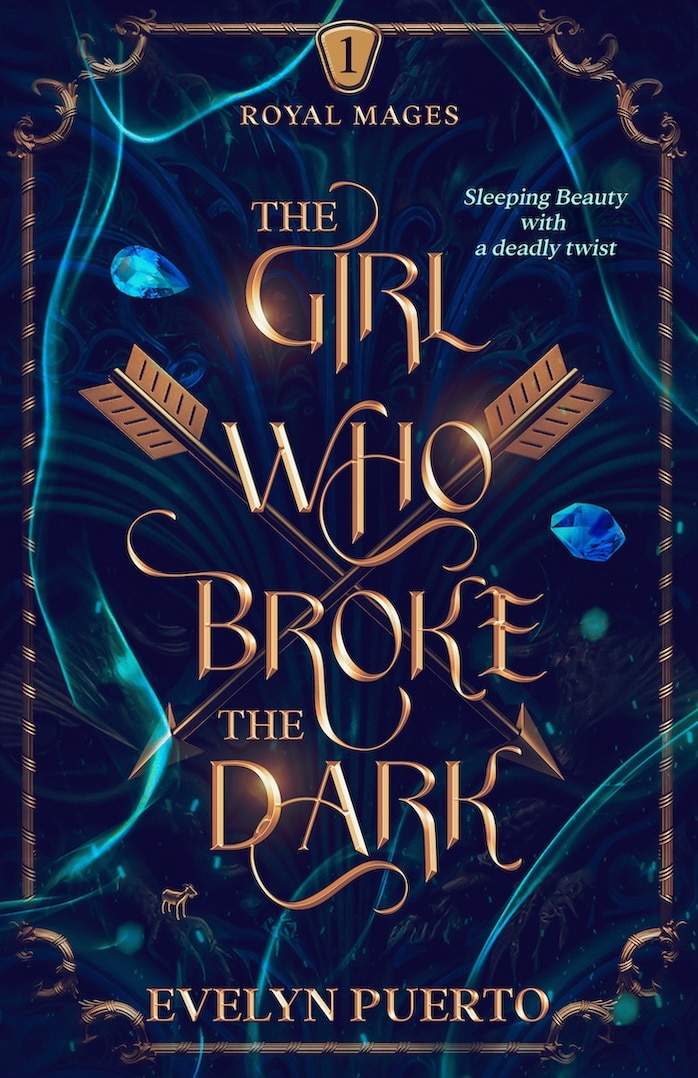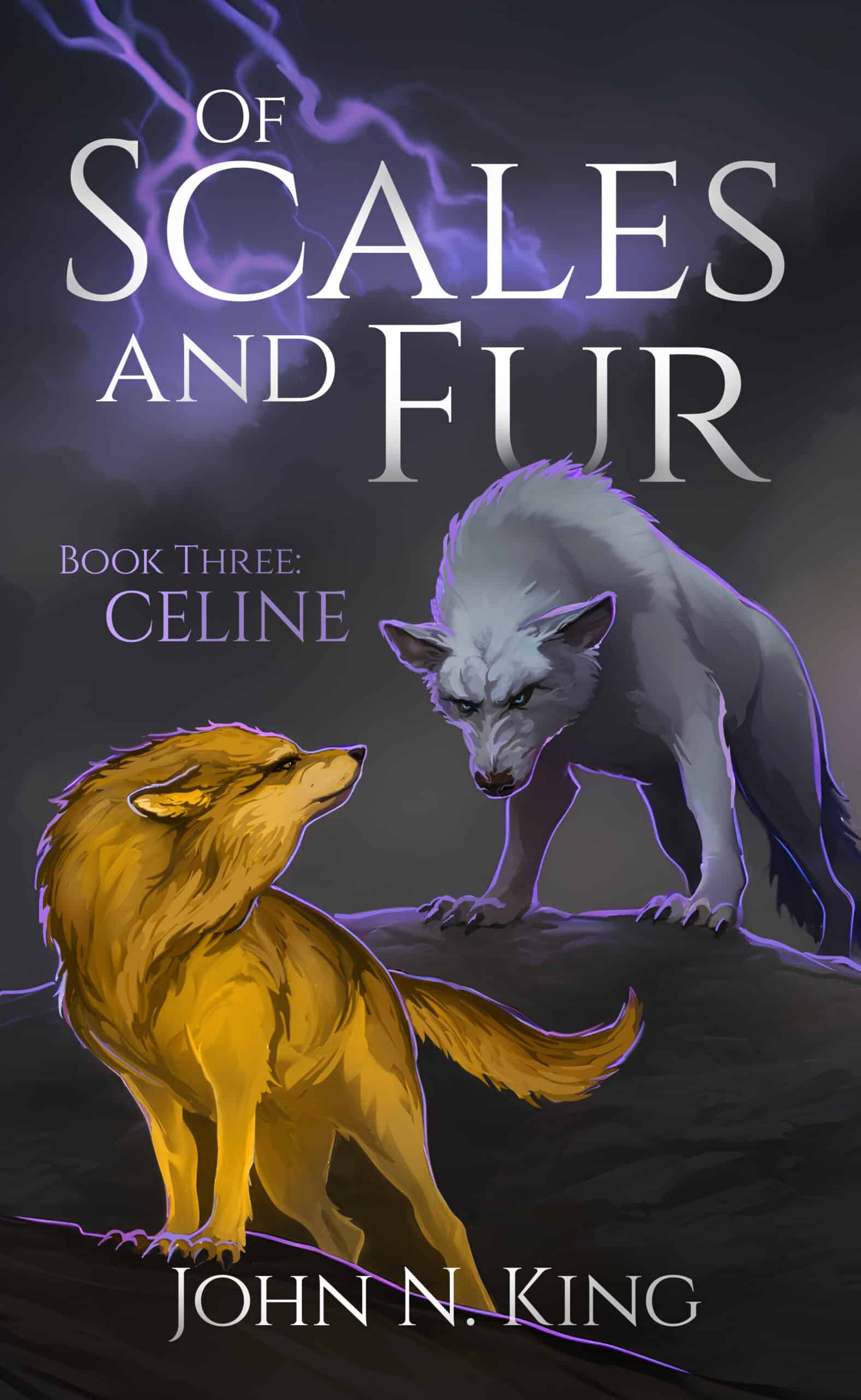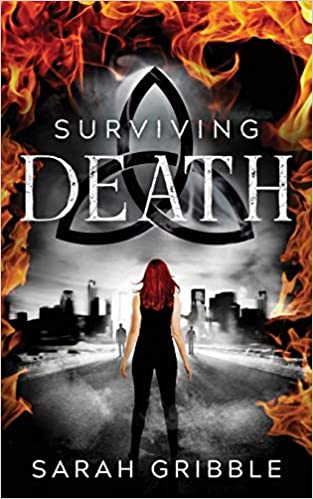For several weeks, I've been blocked on a writing projects for a client. One night, I even stayed up until one in the morning, staring at my screen, unable to write a thing.
Then, just yesterday, I had a breakthrough. In just a few hours, I was able to accomplish more than I had the previous three weeks combined.
What got me unblocked? Visuals.
Why Visuals Work
Writer's block usually has one of four causes:
- Perfectionism and fear of failure
- Not enough focused time
- Not enough data or material to write about
- Lack of motivation
Depending on your personality, visuals can help you in each of these areas. Even the perfectionists colored outside of the lines as children, and there's something about playing with pictures, whether drawing or snagging them online, that speaks to the child in each of us.
For the visually oriented, pictures can offer focus and create time for reflection, even acting as the kindling for further visualisation.
For those who need more data or material, finding the face of your main character using Google Image Search or discovering the perfect setting for your climactic scene on Tumblr might be the gentle push your imagination needs to fill in the rest.
And if you're lacking motivation, perhaps what you need to refocus is to take a “break” from writing to explore Pinterest for inspiration.
3 Ways To Use Visuals Effectively
If you're a visual person, or if you're just so sick of staring at black text on a white screen, here are four ways to best use visuals:
1. Scrapbook Like a Pro
I know. Only women are supposed to scrapbook. That's why I prefer an alternative word that's less gender specific: art journaling.
I was first introduced to art journaling by Betsy Garmon, a professionally trained artist who uses her journal as a place to brainstorm visually. (By the way, check out her website to see how cool art journaling can be.)
Since then, I've used drawings, paint, and colored pens alongside text to draw out my characters and stories in a way I couldn't with black and white alone. The color in my journal ends up revealing the color in my stories.
Try experimenting with color and images in your brainstorming today, and see if it doesn't bring a new dimension to your writing.
2. Find Your Character & Setting
We spoke about this idea above, but one way to develop a deeper visualization of a character or setting is to actually go find a visual of your character or setting.
This is similar to what happens when you watch a movie made from a book and afterward go read the book. I don't know about you but when I re-read Pride & Prejudice I have a hard time not picturing Colin Firth and Jennifer Ehle as Mr. Darcy and Elizabeth.
What you're doing in this case is finding a picture of someone you think looks like your main character, and then using their picture as a tool to add detail to your visualization. And it works exactly the same with settings.
I find that Pinterest can work well for this, but I also like Flickr.
3. Do On-The-Ground “Research”
There are two types of writers: the ones who make up everything they write about (think Tolkien or Rowling) and those who are more journalistic writers, who often write through their own experiences (Hemingway and Jhumpa Lahiri are good examples of this). Which type are you?
I tend toward the journalistic side, and I write best when I'm actually present in the place that I'm writing about. My stories often revolve around my current experiences.
One strategy, then, is to do what Hemingway did and put yourself in remarkable situations which could result in the inspiration for a great story. But you don't have to go on Safari in Africa or fish in Cuba to write a great story. Go to a café or just look around the room in which you're writing.
What is remarkable where you are? What if your current surroundings were the setting for a story? What would that story look like?
Visuals Are Just a Prompt
They won't write your book for you.
So don't get stuck looking for the perfect image. Visuals can be used effectively to provide the leverage to get your imagination moving, but once your imagination is rolling downhill, let it do the hard work on its own. A few visuals might help you break through your writers block, but don't let the research for them get you blocked ever further.
You have too much writing to do to waste time with that.
How about you? Do you use visuals to inspire your writing? In what way?
PRACTICE
Find a picture of your main character using Pinterest, Flickr, or Google Image Search. Once you've found an image that's good enough (but not necessarily perfect), begin writing about that character, seeing where the image leads you. Does his or her expression suggest something? Who else is observing him or her? What's happening in the story when this picture is taken?
Write for fifteen minutes. When you're finished, post your practice in the comments section. And if you post, please be sure to leave feedback for your fellow writers.
Happy writing!
Joe Bunting is an author and the leader of The Write Practice community. He is also the author of the new book Crowdsourcing Paris, a real life adventure story set in France. It was a #1 New Release on Amazon. Follow him on Instagram (@jhbunting).
Want best-seller coaching? Book Joe here.




Fantastic Joe. I use scrapbooking, snippets of conversations, ideas in my head, dreams. Visuals – they are the way to go, as long as you do the work and write.
I do the same thing with books vs. movies. When I read The Shining and it’s describing Wendy’s golden hair, I’m thinking wait, Shelley Duvall doesn’t have golden hair! It totally throws me off. On the bright side, I can read I Am Legend without picturing Will Smith, and for that I am thankful.
I am aware that I will not be winning a Pulitzer prize for this practice, but here it is anyway:
He parked his car in the shade. The shade is good, he thought, it’s too hot in the sun. Especially waiting for somebody. He tried to picture her based
on her voice. She sounded young, he knew. How young, he didn’t. How young is too young? Her smooth vocals flawless like baby’s skin. Tuned like a piano to perfection. She almost certainly had a chestful of round, milky bags—stop that. He ducked deep into his seat, out of view, and took another hit from his glass pipe.
It’s too hot even in the shade what if she thinks I’m on drugs am I sweating my eyes feel so big he looked at his fingernails. They were lined black at the cuticle with oil residue and yellowed at the tips. Absent-mindedly he chewed at them while keeping his eyes peeled for a red sedan and a female driver.
He’d inherited the house when his grandmother died. His only living relative, that he knew, dead. And he had an apartment already, a decent one-bedroom in the upper Rosecrest area and he liked his apartment and he liked living in the city; what did he want with a run-down house in a run-down neighborhood? So he’d rent it out. He’d use the income to pay the property tax and keep a slice for himself and his real job—his passion—sales. He liked the druggies depending on him. He loved their tired, desperate faces knocking at his door, looking pathetic, sometimes on the verge of tears. He could take away all their pain, for one easy payment of $25, of course. Sometimes for a favor of sexual nature.
Lily what a beautiful name like the flower like blossoming in the sun I’ll help her bloom he fanned his chest with his t-shirt, unaware of the sweat beads trickling down his chest.
It was sixty-eight degrees in the shade where he parked.
Great description! I loved at the end how it was only 68 degrees.
What a great prompt! I think the thing I am struggling with right now is good characters and building profiles for those characters. Sometimes my mind blocks and I can only think of people I know. Oh well. Here goes my description:
The room was robust and vivid with ear shattering noise. He stayed through one more song as he finished his beer, watching the reflection of the dance floor in the bar mirror. The smell of a muggy sauna mixed with smells of sweat, perfume and cologne assaulted his nose. He tipped his bottle of beer to his mouth and stopped midway as she came up next to him. She smelled of fresh cut grass and warm summer evenings.
“Crazy in here.”
Her voice caught him off guard, singing in his ears like a bluejay on a bright sunny morning. He forgot about the madness going on around him. His side way glance, which he hoped she wouldn’t notice, took in her thin white T-shirt peeking out of a pink and brown checkered flannel shirt. Her hand rested impatiently on the the bar, revealing a brown leather braided bracelet dotted with pink gems on her wrist. The beer slid down his throat, calming his alert, jumpy nerves. He turned to her, noticed her full pouty lips, “What are you drinking?”
Her hand raked through her hair and she smiled revealing a small dimple on the side of her mouth then ran her hands down the legs of the jeans that hugged her body and accented her curves.
“I’ll have what you’re having.” Green shimmered in her eyes and she smiled at him again.
“Hey bartender?” As the bartender looked over at him he shook his beer from side to side. “Can I get two more of these?” He looked at her again. She was watching him this time. He could not get the words to come out of his mouth. She had rendered him speechless.
I struggle with character creation every time I start something new. Sometimes it’s a character I can relate to, and that makes it easier, but you can’t relate to everybody. I’m still searching for something that works for me as far as character creation. I’ve heard all the advice in the world (make profiles! use people you know! use 2 people you know and make 1 person!) but it’s still hard sometimes. I was in the process of jotting down a blank character profile when I meandered back to this post. . .oh, sweet distractions!
I love the piece you’ve presented. I can’t think of any way to improve it, other than some minor things: I can’t imagine why any girl would smell like fresh cut grass during a night out; “rested impatiently” seems contradicting; you use “bartender” too close together in the last paragraph. Those things were a tad jarring, to me, but everything else fit together nicely. Good descriptions and dialogue.
Thank you very much! I see what you are saying about the corrections. Thanks for the suggestions.
Very descriptive! I love it.
Thank you!!
Great prompt. What I wrote doesn’t sound like my normal writing “voice,” it’s more like an entry in “Who’s Who.” Still, it got me thinking about the back story of a character in a young adult novel I’m writing. She’s the “evil stepmother” of a 14 year old girl who’s forced to live with her estranged father and his new wife after her mother dies of cancer.
*******
Helena Leeves Reynolds
Helena was born in Market Shipborough, a small town in
Northeast England. Her father was a
barrister, a large, rumpled man with a wry sense of humor and a passion for
defending the underdog. Helena’s mother,
a great beauty from local landed gentry, died when she was three. This threw her father into a deep depression,
but he strove to work through it in raising his daughter.
Helena loved three things above everything: horses, books, and her father. Some afternoons after school, she went to
his office and sat in his library, doing her homework and sometimes looking
through his law books. Sometimes he took
her with him to visit his clients who lived in the country. He often discussed his cases with her, and
encouraged her to speak her mind, even if they disagreed with each other.
Her mother’s sister, Grace, lived in London, and Helena
occasionally went to visit her. Grace
took her niece shopping and to the theater, and Helena fell in love with the
city.
Helena was very beautiful and was always being chased by
boys, but she found most of them stupid and horny. She started wearing glasses to discourage
their advances. She soon got the
reputation as a brain and boys began ignorning her. As she grew older, she sometimes wished for
a boyfriend, and yet it seemed to her that most girls played dumb around their
boyfriends and let the boy tell them what to do.
She went to Oxford University, where she got a first in
Women’s Studies, and then began law school (where does one go to law school in
England. Research), with the idea of
returning to Market Shipford and going into practice with her father. While she was in law school, her father
committed suicide. Helena struggled with
depression after his death, but she managed to finish law school. She went to work for a small firm in London
that took on cases of wrongful dismissal, abused women, and other “unwinnable”
cases. She soon learned to use her looks
to her advantage in court, and was known as a tough opponent.
When she was 22, Helena fell in love with Julian Squires, a
senior partner in her law firm. He was a
handsome, brilliant and somewhat eccentric man who loved to read Sherlock
Holmes novels. Helena had been immune to
men up until this point, but she fell head-over-heels in love with Julian. He persuaded her to begin taking on more
profitable clients, bought her expensive gifts, and took her to dinner at
elegant restaurants. Although Helena had
slept with several men, she’d never experienced sexual passion before, and she
was hooked. (Joni Mitchell singing “I Could Drink a Case of You.”) Julian was married, although he told Helena
he was getting a divorce, and strung her along for several years.
Things came to a head when Julian told her he had decided to
reconcile with his wife. Helena found
herself contemplating suicide, but her friends rallied around her and convinced
her to get back in touch with herself.
Helena briefly returned to Market Shipford to work with her father’s old
partner, but she found the town too “backwards” for her, and everything
reminded her of her father. A friend
from college, who had accepted a job teaching at Georgetown University, persuaded
Helena to come to the United States, where she eventually went to work for a
small law firm that took on cases of the poor and underprivileged.
****
This isn’t all of it but it’s what I wrote in 15 minutes . .
.
Great description. I love how much this character is developed.
I did this at the start of my novel, probably because I also paint and see things visually. I needed to be able to see my characters before I could write about them, and having pictures of them (and later of their horses) has helped me so much. I have also printed off tiny thumbnails as well as a map to keep a track of who is where and when as the plot has become more complicated.
http://andrewmartinwalker.com/picture-this/
I have also found pictures of scenery helpful for inspiration. http://andrewmartinwalker.com/searching-for-scenery/
John Freeman sat at his desk, staring at the empty screen, wondering why he was doing this, why he wasn’t doing his postgraduate degree on artificial intelligence? Every day was a chore, another 10 hours to kill, another boring boss to attend to.
Chelsea was nice. She was young, attractive, intelligent and completing an arts degree on English literature… he fell in love with her looks and warm personality but he envied her youthful world view – she wanted to be a teacher, she wanted to make a difference but she also wanted to write, even though she was pretty average at writing, she still believed in having her work read by an audience.
He sat at his desk, realising that the world had him contained in this little cell while Chelsea was a free artist.
I’m trying to draw up a biography of my protagonist near the beginning
Clint, short for Clinton, Bentwood, has no patience for fools. Including himself. That’s why he threw away everything to do with his old way of life – his luxury townhouse, upmarket SUV, a wardrobe of the latest fashions. And himself too, almost. Taking the thorough spring-cleaning to its logical conclusion also meant he should have taken himself out as well.
But that’s where the challenge lay: to remake himself into the person he should have been.
The truck that scooped him up with its bull bars when he staggered home drunk one night along an isolated road didn’t do it.
It was the stay in hospital that brought about his epiphany, his Damascene moment..
Up till then Clive, his conniving father, had led him into the playboy lifestyle that destroyed everyone closest to him.
Including Cecilia, and their son. The little mite with the shock of blonde hair, cool blue eyes, and a chin that was ready to take on the world, continues to haunt Clint from the other side of the world. He can also feel Cecilia’s eyes appraising him as his eyes move around his new lodgings, a disused storeroom above the engineering factory he took over from Clive when the latter was taken away to a penitentiary. At the rate he was going Clint would have joined him in the end.
He’d like to meet the driver of the truck that upended him. To first, shake his hand, second, to put a bullet through his head for landing him in a painful hospital bed.
He stares at the sickly green paint peeling off the walls. He feels on his face the weak winter sunlight trying to break through the layers of grime covering the little window. His leg is in plaster, one arm in a sling, and his head still rings from concussion after hurtling twenty feet through the air before he landed in a gravel pit.
A river of fire courses through his body when he tries to lift the leg. Only now, when the narcotics have worn off, does he wonder if he did the right thing to ignore the doctors and hobble back to work two days after the accident.
Looking up he notices for the first time the faded little curtain with roses drawn and tied back from the window.
He will not be alone in remaking his life.
I like the idea you have. I’ve read books that start off in a sort of biographical format. But the thing is, in those books, the biography only lasted a few sentences, or a few paragraphs. Here you have a lot of info and no story. You have what has happened, not what is happening. Not what will happen. It’s 100% back story, which rarely captivates a reader.
That is not to say that you don’t have talent. That is not to say that you are not a good writer. You are, I can see that you are. You’ve got great descriptions and your characters have cool names. Except they all start with the letter C. I might advise that you choose dissimilar names for your characters. When things in a story get moving, the reader focuses mostly on keywords and letters. If all the names look the same, even a little bit, it throws off the reader.
Haven’t seen you around here before, Winnie. I hope to see you again soon. 🙂
I hadn’t thought of using visuals to get past blocks in fiction writing (or to get started for that matter), but I do find that they regularly help me with non-fiction writing. I’ve come up with a list of blog post ideas simply by googling random words and going through the images that magically appear on my screen.
Generally, the posts have nothing to do with the word I googled. But something in them triggers my imagination and I will suddenly have a sentence or phrase or title that I can build a post from. It’s a wonderful tool and gives my writing brain a bit of a break while I accomplish work that I often find difficult – generating ideas.